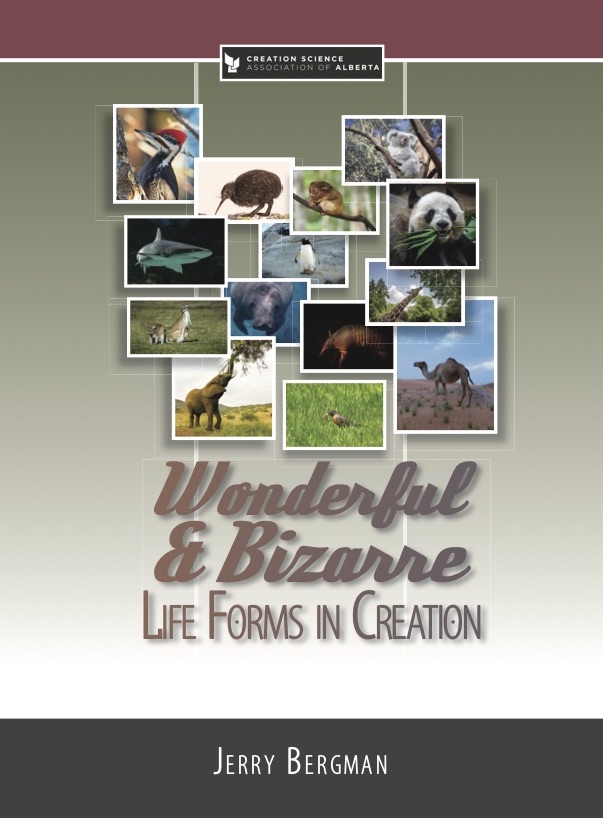In Nova Scotia, as elsewhere in the Maritimes, we discover that fossils are an exciting part of the landscape. Not the least of our discoveries are the dinosaurs of Parrsboro. Dinosaurs?? We thought western Canada had exclusive claim to such Canadian artifacts. Not quite. West of Truro, along the north shore of the Minas Basin, we find the touristy town of Parrsboro. The scenery is beautiful, with blueberry crops growing on local hummocky hills. Furthermore the beaches along this stretch of coast are famous for fossils, dinosaur fossils to be specific.
The dinosaurs here are not the same ones as in western Canada, but there are some trackways which resemble those of Coelophysis, a wonderfully agile predator (the bones of which have been found in large numbers in New Mexico). Other trackways in the Parrsboro area are identified as those of Dilophosaurus, another frisky predator which has been characterized as the “terror of the early Jurassic”. Bones have also been found of some prosauropod dinosaurs, perhaps plant eaters. The sediments which entomb these fossils include lava flows and crossbedded sand deposits. Volcanic eruptions would obviously be dangerous for dinosaurs. Moreover sand waves, producing crossbedded deposits, are laid down by extremely deep and fast-moving water currents. It certainly sounds like a great flood! Was this really 200 million years ago as the experts suppose?
Only about 30 km north of Parrsboro, on the south shore of the Bay of Fundy sits Joggins, another must-see location. This community turns out to be tiny, with few services, but there is a gift shop which doubles as a small museum, and the beach and cliff itself are easily accessible. Since the mid 19th century, the cliff along the beach at Joggins, has been famous for its preserved trunks of club moss trees. Said to be 100 million years older than the Parrsboro fossils, these extinct and exotic-looking plants perhaps grew, in life, to a height of 35 metres. Relatives of these trees survive today, but they are easily missed, since they are seldom more than 25 centimetres tall. Also in the cliffs there are large stems of horsetail plants. While smaller specimens are common today, the extinct plants had diameters of about 8 cm and heights of 5-10 m.
Dramatic fragments of club moss trunks up to 5 m tall, as well as pieces of horsetail stem (Calamites), are often found in growth position in the cliff. Since these stems occur at many levels in the cliff, geologists generally conclude that one forest after another grew on the site. Each was buried, one above the other, by flooding from a nearby river. According to this view, the whole cliff might have required several millions of years to accumulate. There are some serious problems with this interpretation however. The tree trunks, for example, consist only of a thin rim of bark. In life, the interior of the trunk was occupied by soft tissue which quickly rotted away. With so flimsy a structure, the segments of trunk were obviously buried over their entire length, otherwise they would quickly have been knocked over, or have rotted away. Imagine the size of the flood capable of carrying enough sediment to bury 5 m tall trunks at one time! With lengths of trunk overlapping in the cliff, the scale of that flood, needed to bury them all at one time, becomes more dramatic still. We need deep fast moving water to carry so much sediment. Such a flood would cover a huge area. (Also see Dialogue 1992 vol. 19 #3).
Other artifacts preserved in the Joggins sediments include the articulated skeleton of a large amphibian called Dendrerpton (found preserved in grey siltstone). Some of these extinct carnivores grew to 1 m long. Can you imagine a frog or salamander that large? The latter are amphibians too, but of course much smaller. Skeletons preserved with bones in life position, like this Dendrerpton, require rapid burial to prevent decay and disintegration. Perhaps the creature drowned and was buried at the same time.
There are also trackways of a gigantic sow-bug like arthropod called Arthropleura. This creature apparently grew to 2 m long and 25 cm in diameter. Imagine so large a millipede-like creature moving toward you along the forest floor. I would either scream or faint! Its appetite must have been colossal even if it was eating only decaying vegetation. Also the remains of gigantic dragonflies are preserved (wingspan to 70 cm). Apparently all these creatures were engulfed by muddy water since there are frequent dark layers of sediment containing fish scales, fish bone fragments, and tiny crustaceans above and below the traces of the larger animals.
Joggins is obviously famous for more than the gigantic fossilized trees. Trackways there include horseshoe crab tracks, the gigantic arthropod tracks already mentioned, and reptile footprints ranging in size from 1 cm to 15 cm long. But how did footprints come to be made at a time of catastrophic flooding? It may be that the vegetation, stripped from the land by torrential flooding, initially was able to float in rafts, with terrestrial animals along for the ride. As the plants became waterlogged and sank in vertical position (experiments show that some plants do this), the animals may have been forced into the water. Some of them may have scrambled over the bottom before they were swept away by further loads of sediment. This would explain why there is no evidence of forest floor debris (the forest did not grow there) and why there is such a variety of fossil artifacts.
But there is more to see. Lastly we proceed to the Northumberland Strait Coast. Near Tatamagouche, we find the tiny hamlet of Brule. During the summer of 1994, two brothers noticed fossils of tree stumps protruding from the rocky shore. Further inspection revealed the remains of leaves and fallen trunks as well. The plant material turned out to be an extinct conifer called Walchia (similar to trees that are common in Australia to this day). Interestingly, although scientists interpret this as the remains of a forest preserved in growth position, there is no sign of any plant material which grew on the forest floor. Perhaps these trees did not grow here after all.
As at Joggins, these sediments also contain footprints. Hundreds of tracks have been observed which are characteristic of large amphibians and of mammal-like reptiles such as Varanops and Dimetrodon (one of the famous sail-backs). Also, as at Joggins, there were huge dragonfly wings and aquatic crustaceans. Unlike Joggins however, the surface of almost every layer of sediment is deeply cracked. Geologists interpret this as evidence that these layers dried soon after they were deposited. This however is not necessarily so. Such shrinkage cracks are also known to develop in wet sediments under pressure from other layers above.
At any rate, most layers at Brule feature these cracks. Even more interesting is the fact that the footprints, in layer after layer, all proceed in the same direction. There was obviously some feature in the environment which encouraged these animals to proceed in the same direction. It may have been prevailing water currents. Perhaps these animals, having fallen off a vegetation raft, turned to face the oncoming torrents of water. It sounds like a very big flood! Was it really 290 million years ago?
The whole Maritime region encourages us to reflect on past catastrophes. The apparent size of these floods suggests that none was a local event. It may be that all were involved in one and the same terrible flood. Who would imagine that holiday beaches could provide such food for thought?
References
- Harry Thurston. 1994. Dawning of the Dinosaurs: the story of Canada?s oldest dinosaurs. Nimbus Publishing & the Nova Scotia Museum. Halifax. 91 pages.
- http://museum.gov.ns.ca/fgm/lab/lab.html
- Margaret Helder. 1992. At Joggins : Look What the Sea Uncovered. Creation Science Dialogue vol. 19 #3.
Margaret Helder
April 2005
Subscribe to Dialogue







